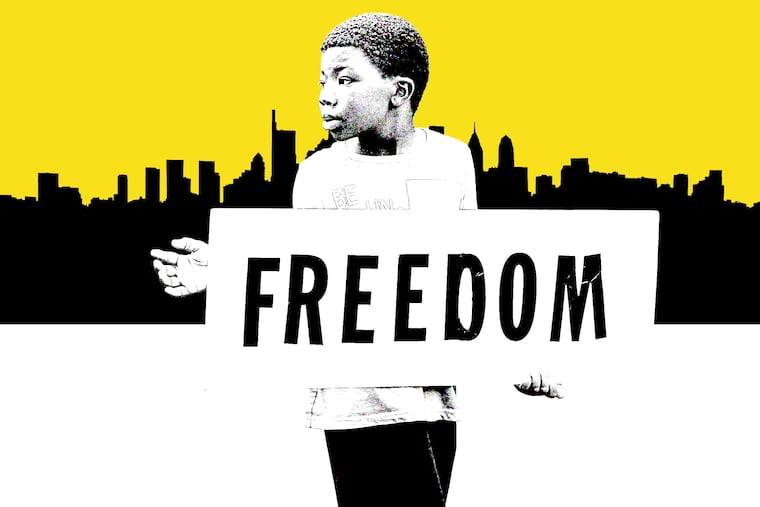How Haitian immigrants and local Black resistance helped subvert slavery in 18th-century Philadelphia
At the dawn of the nation, Philadelphia made it possible to abolish chattel slavery, thanks to two key events.

When it comes to Black history and the city of Philadelphia, there is much to reflect on and celebrate.
There’s the work of South Jersey-born abolitionist William Still, who was known as the father of the Underground Railroad, responsible for ushering African Americans safely through Philadelphia on their way to freedom.
There’s also the work of groups such as the Agricultural and Mechanics Association of Pennsylvania and New Jersey, which purchased land and financed education for newly emancipated African Americans.
But what also deserves reflection is that Philadelphia is a city of Black resistance to slavery, dating back to the 18th century.
Black resistance is the active work to prevent or subvert the ongoing oppression of Black people in a systemically racist society. Philadelphia’s Quaker community certainly assisted with the Black freedom struggle. However, what mustn’t be overlooked is that African Americans played a key role in their liberation.
What made enslavement in the United States — and in the New World — unique was that the European made the African his chattel, or piece of property, for his own profit and pleasure. Chattel enslavement is what food historian Jessica B. Harris called “a keloid on the face of the United States, a thick scar that is our nation’s birthmark.”
Black resistance at this time was focused on subverting chattel slavery at all costs. At the dawn of the nation, Philadelphia made it possible, thanks to two key events: the Gradual Abolition Act and its intersection with the Haitian Revolution.
As the first extensive legislation in the West abolishing slavery, Pennsylvania’s Gradual Abolition Act of 1780 did a few things, but most importantly, it prohibited nonresidents of Pennsylvania from keeping enslaved Africans in the state longer than six months. To sidestep the law when they were in Philadelphia, then the capital of the nation, George and Martha Washington brought their enslaved people back to Mount Vernon every six months. One day in 1796, while pretending to plan to head home to Virginia, Ona Judge fled to New Hampshire, with the help of free Black Americans; the famed chef named Hercules Posey escaped in 1797.
As Washington wrestled with the loss of his “property,” the revolution happening in Saint Domingue (Haiti) between the enslaved and colonists was taking place between 1790 and 1804. The battles drove French enslavers to the new nation, with some arriving in Philadelphia with their human property.
Much to their dismay, these enslavers learned of the 1780 act, and how they, too, were in jeopardy of losing their property. They sought relief from the law by petitioning the state legislature. They were denied, yet to subvert the act, these enslavers entered Africans into indentured servitude after six months in the city. As a result, among 659 enslaved Africans who were released from slavery in Philadelphia between 1787 and 1810, only 45 ended up receiving their freedom.
At the time, Philadelphia was a city of free Black people.
However, at the time, Philadelphia was a city of free Black people — more than New York, Baltimore, or Boston. That critical mass of Black people — combined with white fears of the spirit of rebellion in Haiti arriving in Philadelphia, and Black resentment over how white Americans supported colonists over the enslaved — fueled Black Philadelphians and encouraged them to make their grievances known.
In response, Pennsylvania attempted to prevent African Americans from entering the city in 1798, especially those from Saint Domingue. But Black Philadelphians, led by Absalom Jones, Richard Allen, and James Forten, petitioned the federal government to revoke the Fugitive Slave Act and end enslavement for good.
Such petitions continued over the next few years, culminating with street resistance on July 4, 1804.
On that night, Black Philadelphians took to the streets to protest the legitimacy of the Black revolt in Haiti and in general. They assembled, organized, and dared white people to stop them. In some cases, white people were confronted with violence.
According to Rutgers professor Leslie Alexander, in her book Fear of a Black Republic, around 100 Black people “roamed the streets with clubs and swords,” robbing and attacking white people, starting around 10 p.m. that night. “The next night, nearly 200 Black Philadelphians marched in the streets.”
At one point, said Alexander, the protesters evoked “St. Domingo,” a reference to the style of rebellion that had taken place in Haiti.
» READ MORE: Where to celebrate Black History Month in Philly
While the protests lasted only a few days, Alexander suggests that the rebellion demonstrates that some Black people in the United States celebrated and honored the Haitian Revolution — and independent Haiti — and used it as a model for their local liberation struggles.
Philadelphia’s roots as a city of Black resistance should serve as a point of pride. It is also a reminder that racial injustice is never met with silence, but with action — to prevent or subvert the ongoing oppression of Black people in a systemically racist society.
That is the work and it always will be, whether it’s 1804 or 2024. We call on our elected officials to join us in our cause.
Rann Miller is an educator and freelance writer based in South Jersey. His Urban Education Mixtape blog supports urban educators and parents of children attending urban schools. Miller is also the author of “Resistance Stories from Black History for Kids,” reissued in 2024. @RealRannMiller